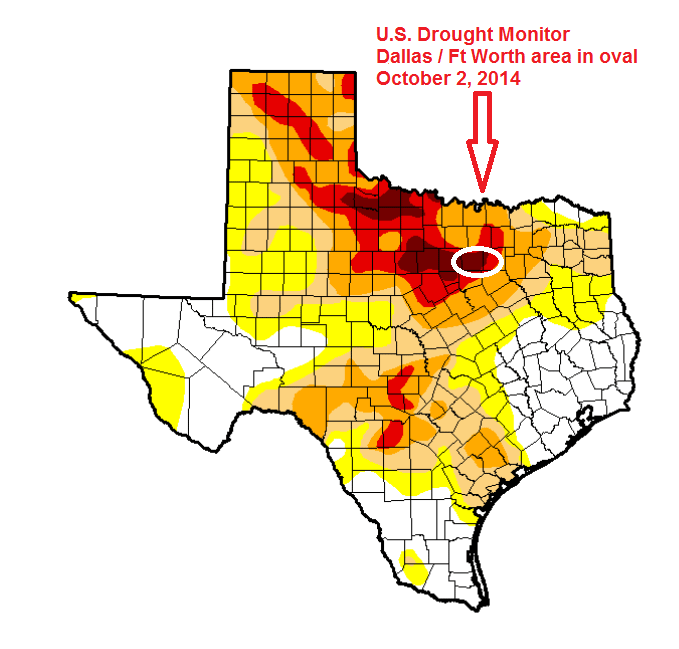Dallas Drought of 2014 (started in 2010)
The summer of 2014 is finally over and the results for Dallas are: “still in drought conditions.” It was a tough summer for the north central portion of Texas and for most of Texas in general. And it follows the drought of 2013 and the worst single year drought in Texas history in 2011. This is all part of a longer term drought that began in 2010 according to many climatologists. And the effect in the home foundation repair industry has been dramatic.
Approximately 70% of Texas was experiencing drought during the middle of the summer this year. To make matters worse, human climate change seems to be playing a role also. Last year a state climatologist testified in the Texas Legislature that average temperatures in Texas have risen 2 degrees Fahrenheit in the last forty years.
Many fingers are pointed at the “La Nina” weather pattern for the the recent series of annual droughts in Texas and the southern United States. This weather pattern is created when the surface temperatures of the Pacific ocean are a bit cooler than normal. This creates a climate effect that produces drier and hotter weather in the southern portions of the United States.
Impact on Dallas Homes and Foundations
For the most part homeowners in Dallas, Plano, Garland, Arlington, and other nearby communities are at the mercy of the weather. However, the quality of the homebuilder’s construction will also play a role. That is, it is critical that the home builder properly compacted the soil before pouring the concrete slab foundation. And the thickness of the slab foundation is very important – and unfortunately most homebuilders choose to build minimally functional foundations (thin). And structural engineers will tell you there is a big difference in performance between steel rebar and “post tension cables” – with a decided preference for steel rebar for its strength and rigidity.
Preventative Tips
There are a few steps homeowners can take to minimize the effects of drought (soil movement) on their home foundation. However, keep in mind that these steps will only have minimal effect during a moderate or severe drought. It is virtually impossible for a homeowner to put enough water into the surrounding soil to negate the soil’s moisture loss during a drought.
- Remove large shrubs and bushes that are near the home’s foundation
- Remove trees that are too close to the foundation – the “drip line” should be at least 10 feet from the foundation perimeter
- Install root barriers to prevent tree roots from withdrawing water from the foundation perimeter
- Install soaker hoses to maintain a steady moisture content for the soil (this will have little effect during a moderate or severe drought)

